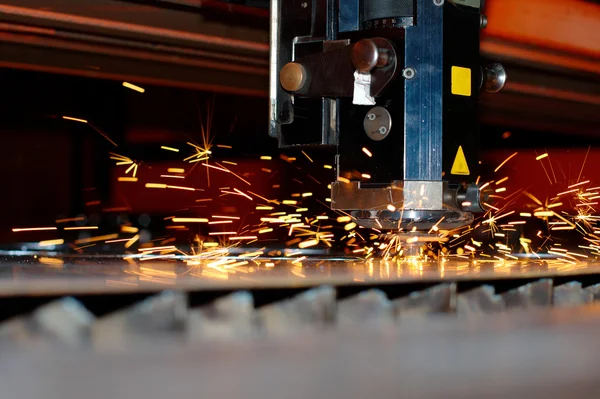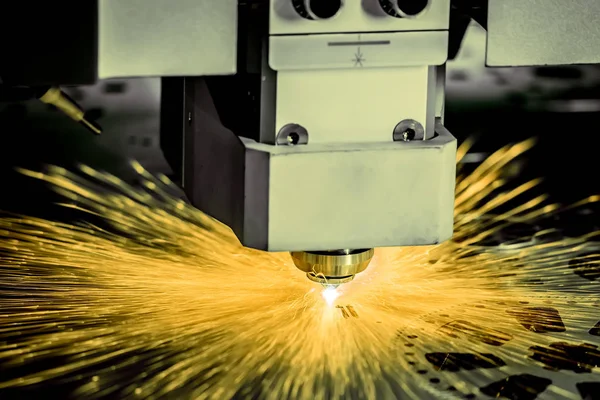Maximizing Productivity: The Role Of Laser Cutters In Industrial Automation
In today’s fast-paced industrial landscape, maximizing productivity is crucial for companies striving to remain competitive. Automation has emerged as a transformative force, enhancing efficiency, reducing waste, and ensuring high-quality output. Among the key players in this technological evolution are laser cutters, which have become integral to various manufacturing processes. This article explores the significant role of laser cutters in industrial automation, examining their capabilities, advantages, and applications.
Understanding Laser Cutters
Laser cutters utilize focused beams of light to cut, engrave, or mark materials with exceptional precision. By converting light into heat, these machines can effectively melt, burn, or vaporize materials, resulting in clean cuts and intricate designs. The technology encompasses various types of lasers, including CO2, fiber, and neodymium lasers, each suited for different materials and applications.
Types of Laser Cutters
The most commonly used laser cutters in industrial settings include CO2 laser cutters, which are ideal for non-metal materials like wood, acrylic, and plastics. They are renowned for their versatility and cost-effectiveness. Fiber lasers, on the other hand, excel in cutting metals, including steel and aluminum, thanks to their higher power density and efficiency. Neodymium lasers, although less common, are used for specific applications requiring deep penetration and precision, such as cutting thick materials.
How Laser Cutters Work
Laser cutting involves several key processes. The machine first generates a laser beam, which is directed through a series of mirrors and lenses to focus the beam onto the material’s surface. A high-pressure gas, typically oxygen or nitrogen, is then used to assist in the cutting process by blowing away molten material, ensuring a smooth and clean finish. The entire operation is controlled by advanced computer software that allows for intricate designs and patterns, enabling manufacturers to create customized products efficiently.
Enhancing Efficiency through Automation
One of the primary benefits of incorporating laser cutters into industrial automation is the significant enhancement of operational efficiency. These machines can operate continuously without the need for breaks, dramatically increasing production rates. Additionally, the precision of laser cutting minimizes material waste, as the cuts are clean and require less finishing work.

Streamlining Production Processes
Laser cutters can seamlessly integrate into automated production lines, facilitating a streamlined workflow. The ability to automate cutting processes reduces the need for manual intervention, allowing operators to focus on other critical tasks. This integration not only speeds up production but also reduces the likelihood of human error, resulting in more consistent quality.
Flexibility and Adaptability
Laser cutters are inherently adaptable and capable of handling various materials and designs with minimal setup time. This flexibility allows manufacturers to respond quickly to market demands, producing small batches of customized products without significant downtime. The rapid changeover capabilities make laser cutters particularly valuable in industries where product variety is essential.
Quality and Precision
Precision is a hallmark of laser cutting technology, making it ideal for industries that require high-quality output. The narrow kerf produced by laser cutters ensures that materials are cut with minimal thermal distortion, resulting in tighter tolerances and better overall quality.
Consistency in Output
The automation of laser-cutting processes leads to unparalleled consistency in output. Once programmed, laser cutters can replicate intricate designs with accuracy, ensuring that each piece meets the specified requirements. This level of precision is particularly advantageous in industries such as aerospace and automotive, where exact measurements are crucial.
Surface Finishing and Detail
Laser cutters excel in achieving fine details and complex designs that would be challenging to replicate using traditional cutting methods. The ability to engrave and mark surfaces with high precision enhances the aesthetic appeal of products, making them more attractive to consumers. Additionally, the clean cuts reduce the need for extensive finishing processes, further streamlining production.

Cost-Effectiveness
Investing in laser-cutting technology can yield substantial cost savings for manufacturers. While the initial investment may be higher compared to traditional cutting methods, the long-term benefits often outweigh the costs.
Reduced Material Waste
One of the most significant advantages of laser cutters is their ability to minimize material waste. The precision of laser cutting means that less material is wasted during the cutting process. This efficiency not only lowers material costs but also contributes to more sustainable manufacturing practices.
Decreased Labor Costs
The automation of laser-cutting processes reduces the reliance on manual labor, leading to decreased labor costs. With fewer operators required to manage the cutting process, companies can allocate resources to other areas of production or reduce staffing needs altogether.
Lower Maintenance and Operational Costs
Laser cutters are designed for longevity and require minimal maintenance compared to traditional cutting machines. The reduced wear and tear on components translate to lower operational costs over time, making laser cutting a financially viable option for many manufacturers.
Applications of Laser Cutters in Industrial Automation
Laser-cutting technology is versatile and finds applications across various industries, enhancing productivity in each sector.
- Aerospace and Automotive Industries: In the aerospace and automotive sectors, laser cutters are used for cutting complex parts, including brackets, panels, and structural components.
- Electronics Manufacturing: In the electronics industry, laser cutters are utilized for producing intricate circuit boards and enclosures.
- Metal Fabrication: Metal fabrication shops rely on laser cutting for its efficiency and accuracy. Laser cutters can handle a variety of metal thicknesses, allowing fabricators to produce everything from intricate designs to heavy-duty components quickly and effectively.
- Signage and Decorative Arts: The signage and decorative arts industries benefit from the ability to create detailed engravings and custom shapes.
20 Fowler Rd, Dandenong South VIC 3175, Australia
Phone: 613-9794-6675

